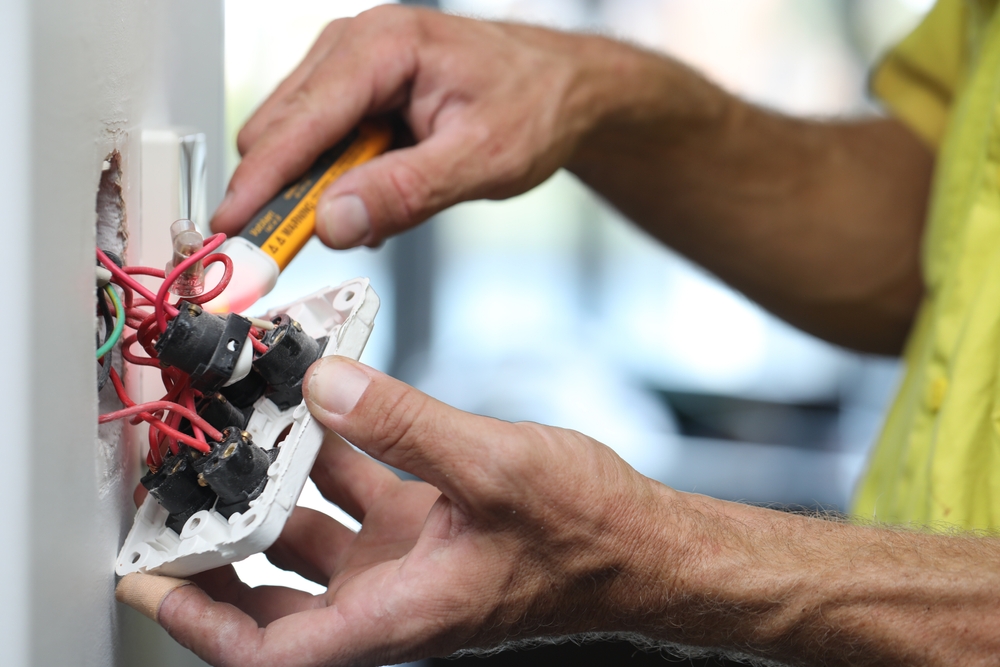Service upgrades pave the way for safer, more efficient homes—especially as modern appliances demand more power. Discover when an electrical service upgrade is warranted, what to expect during the process, and how we ensure seamless transitions for your peace of mind.
Is your home’s electrical system keeping up with the demands of modern life? From powering energy-efficient appliances to supporting home offices and electric vehicle chargers, today’s homes demand much more electricity than homes built decades ago. If you’re noticing frequent circuit breaker trips, struggling to add new appliances, or simply want to improve your home’s safety and convenience, it may be time for an electrical service upgrade.
This guide will cover everything you need to know about upgrading your electrical service. Whether you’re a homeowner preparing for a renovation, a DIY enthusiast exploring your options, or a real estate investor upgrading a property, this comprehensive resource will walk you through signs that an upgrade is needed, the process involved, and the benefits you can expect.
Understanding Electrical Service Capacity
Your home’s electrical service capacity refers to the amount of electricity it can safely handle, measured in amperes (amps). Older homes often have service panels rated for 60 or 100 amps, which were more than sufficient when major home appliances and technologies were far less common. However, modern homes often need at least 200 amps to power everything from smart appliances and HVAC systems to home offices and entertainment centers.
Upgrading to a 200-amp service gives you the required capacity to handle today’s energy demands while providing room for future expansion.
Signs You May Need an Upgrade
Not sure if your electrical system needs upgrading? Here are some common signs that indicate it may be time to take action:
- Fuse Box Instead of Circuit Breakers: If your home still uses an outdated fuse box, it’s time to modernize. Circuit breakers are safer and more efficient.
- Frequent Breaker Trips or Blown Fuses: Struggling to run multiple appliances simultaneously is a clear indicator that your system is overloaded.
- Adding Major Appliances or Features: New additions like electric vehicle chargers, hot tubs, or central air conditioning can easily push older systems past their limits.
- Planned Renovations: Adding more square footage or upgrading existing spaces often comes with increased electrical demands.
- Maintenance Concerns: Corrosion, rust, or heat coming from your electrical panel are warning signs that require immediate attention.
- No Room in Your Current Panel: If your panel doesn’t have space for more circuits, an upgrade can provide the additional capacity you need.
Why Upgrading Matters
Upgrading your electrical service isn’t just about powering more devices—it’s about improving your home’s overall safety, convenience, and value.
Enhanced Safety
Older electrical systems pose risks such as overheating and electrical fires. Upgrading ensures your home meets current safety standards and reduces hazards.
Increased Home Value
An updated electrical system is a selling point for potential buyers. It shows your home is modern, safe, and ready to handle today’s technology.
Greater Convenience
No more choosing between running kitchen appliances or charging your devices—an upgraded system allows for seamless operation of multiple appliances and features.
Future-Proofing
A 200-amp service prepares your home for future needs, like adding renewable energy systems, automating smart homes, or accommodating energy-intensive upgrades.

What to Expect During the Upgrade Process
Upgrading your electrical service is a multi-step process that requires coordination, expertise, and compliance with local codes. Here’s what to expect.
Step 1: Initial Assessment
A licensed electrician will inspect your current system to evaluate service capacity, the condition of your wiring and panel, and your specific energy needs. This initial review also ensures local electrical codes are met.
Step 2: Permits and Planning
Before any work begins, permits will be obtained from your local authorities. Your electrician will coordinate with your utility provider to schedule installation and inspections.
Step 3: The Installation Process
Common steps include:
- Disconnecting the current electrical panel
- Installing a new service entrance and electrical panel
- Connecting existing circuits to the upgraded panel
- Adding a new grounding system if required
- Restoring power once the installation is complete
Step 4: Inspection and Approval
Once the upgrade is complete, it will be inspected and approved by local electrical inspectors and your utility company to ensure it complies with safety regulations.
What Does It Cost to Upgrade Electrical Service?
The cost of upgrading electrical service typically ranges between $2,000 and $4,500, depending on several factors:
- Current panel capacity and desired upgrade level
- Labor and permit fees in your area
- Any additional work needed, like relocating the panel or updating the wiring
- Requirements set by your utility provider
While the upfront cost may seem significant, consider it an investment in your safety and home’s long-term functionality.

Selecting the Right Electrical Contractor
Choosing an experienced, qualified electrician is crucial to the success of your project. Key qualifications include:
- A current electrical license and insurance
- Experience with service upgrades
- Knowledge of local codes and permit requirements
- Strong customer reviews and recommendations
Questions to ask your contractor:
- How many upgrades like this have you completed?
- What permits and inspections will be required?
- How long will the upgrade take?
- Will you coordinate with the utility company?
- Is there a warranty for your work?
Preparing Your Home for the Upgrade
Before work begins, you can take a few steps to ensure the process is as smooth as possible:
- Clear Access: Move furniture or other items obstructing your electrical panel.
- Backup Electronics: Avoid data loss by backing up important files on your devices.
- Plan for Power Outage: The process will involve a temporary loss of power, typically lasting 4-8 hours.
Keep documentation such as before-and-after photos, permits, and warranty information for future reference.
Enjoy the Benefits of a Modern Electrical Panel
Upgrading your electrical service is a vital step for meeting today’s energy demands and ensuring your home remains safe, functional, and valuable. Whether you’re modernizing your space, preparing for renovations, or accommodating new appliances, this investment offers peace of mind and long-term convenience.
Work with a licensed electrician, stay informed about the process, and enjoy the peace of mind that comes with a safer, more reliable electrical system.


